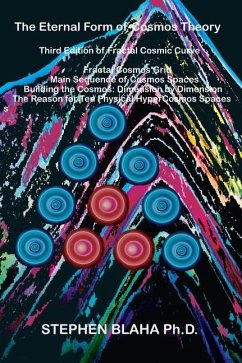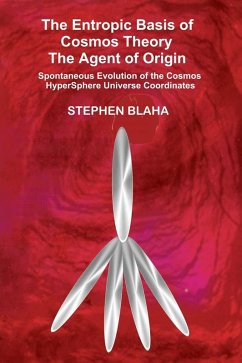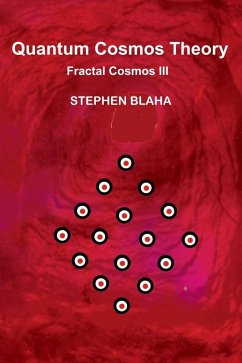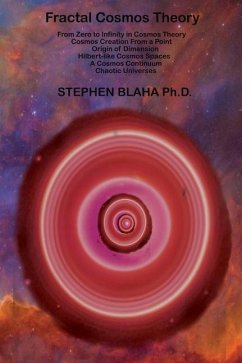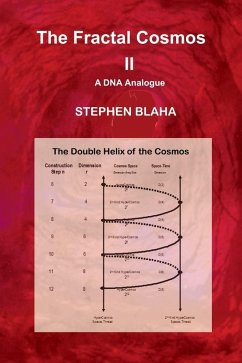
Quark, Lepton, W and Z Masses of Cosmos Theory and The Standard Model
Versandkostenfrei!
Versandfertig in über 4 Wochen
16,99 €
inkl. MwSt.

PAYBACK Punkte
8 °P sammeln!
Cosmos Theory has evolved from a specification of spaces and their associated arrays of dimensions to the consideration of the consistency condition that limits the set of Physical spaces to ten. Physical spaces support universes including ours. Our 4 dimension universe has sets of fermions, vector bosons, scalar bosons, and so on that are defined using Internal Symmetry groups. These symmetry groups arise as amalgams of sets of eight fundamental representation dimensions. The proof of Cosmos Theory at the multi-space, multi-universe levels would be difficult to say the least. And likely to be...
Cosmos Theory has evolved from a specification of spaces and their associated arrays of dimensions to the consideration of the consistency condition that limits the set of Physical spaces to ten. Physical spaces support universes including ours. Our 4 dimension universe has sets of fermions, vector bosons, scalar bosons, and so on that are defined using Internal Symmetry groups. These symmetry groups arise as amalgams of sets of eight fundamental representation dimensions. The proof of Cosmos Theory at the multi-space, multi-universe levels would be difficult to say the least. And likely to be so indefinitely into the future - although there are some hints of phenomena beyond our universe. Recently we developed a consistency condition that limits the number of Physical spaces to ten. Remarkably, this derivation led directly to the forms of physical constants such as the Fine Structure Constant, and the coupling constants of the ElectroWeak and Strong Interactions. The coupling constants were shown to consist of the base, e, of the natural logarithms times factors consisting of powers of two. We were able to show that these factors of two directly originated in the number of degrees of freedom of fermions. The values of coupling constants are now understood. The closeness of their expressions to features of the Limos spaces of Cosmos Theory can only be interpreted as direct experimental support for Cosmos Theory within our universe. This book considers other major global constants of our universe, namely, elementary particle masses. Working from experimentally known eight fundamental fermion (current) masses, the book exhibits mass patterns exist that lead to accurate estimates of fermion masses using powers of two and pi = 3.14159. The forms of these estimates resemble the forms of coupling constants. These mass value estimates give significant additional circumstantial evidence for Cosmos Theory within our universe. An interesting point that arises: Coupling Constants have a factor of e, masses have a factor of pi to a power, and the consistency condition unites e and pi in epi/4 which plays the role of a dimension in the consistency condition. Note that epi/4 = about 2 with 2 being the power sequence variable in dimension specifications in Cosmos spaces. The list of evidence for Cosmos Theory is further augmented by the calculation of the Weinberg angle and the vector boson Z and W masses within the Cosmos Theory framework based on Coupling Constant expressions and fermion mass expressions. The book also makes projections of fermion masses to higher generations. The mass calculations presented here greatly strengthen the experimental support for Cosmos Theory. Cosmos thought is being brought down to earth!






